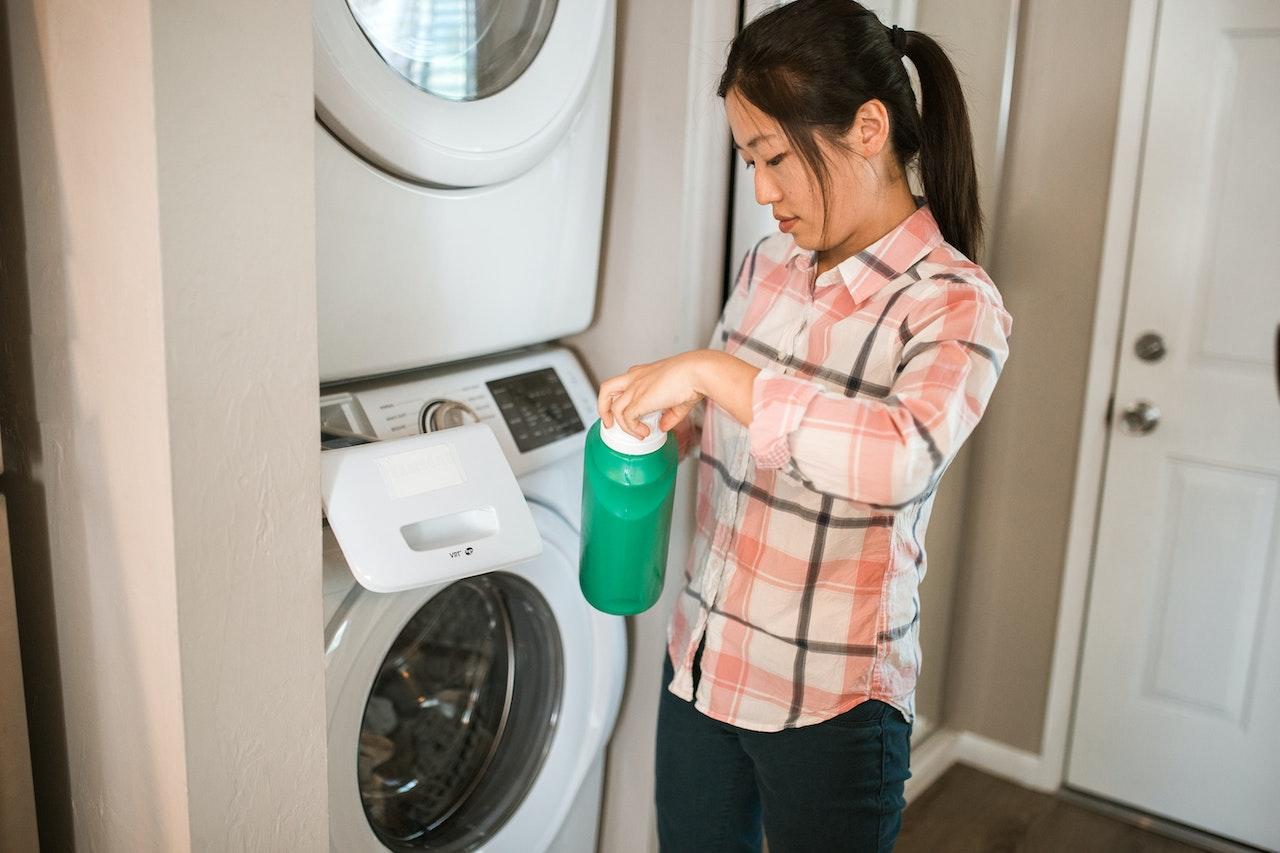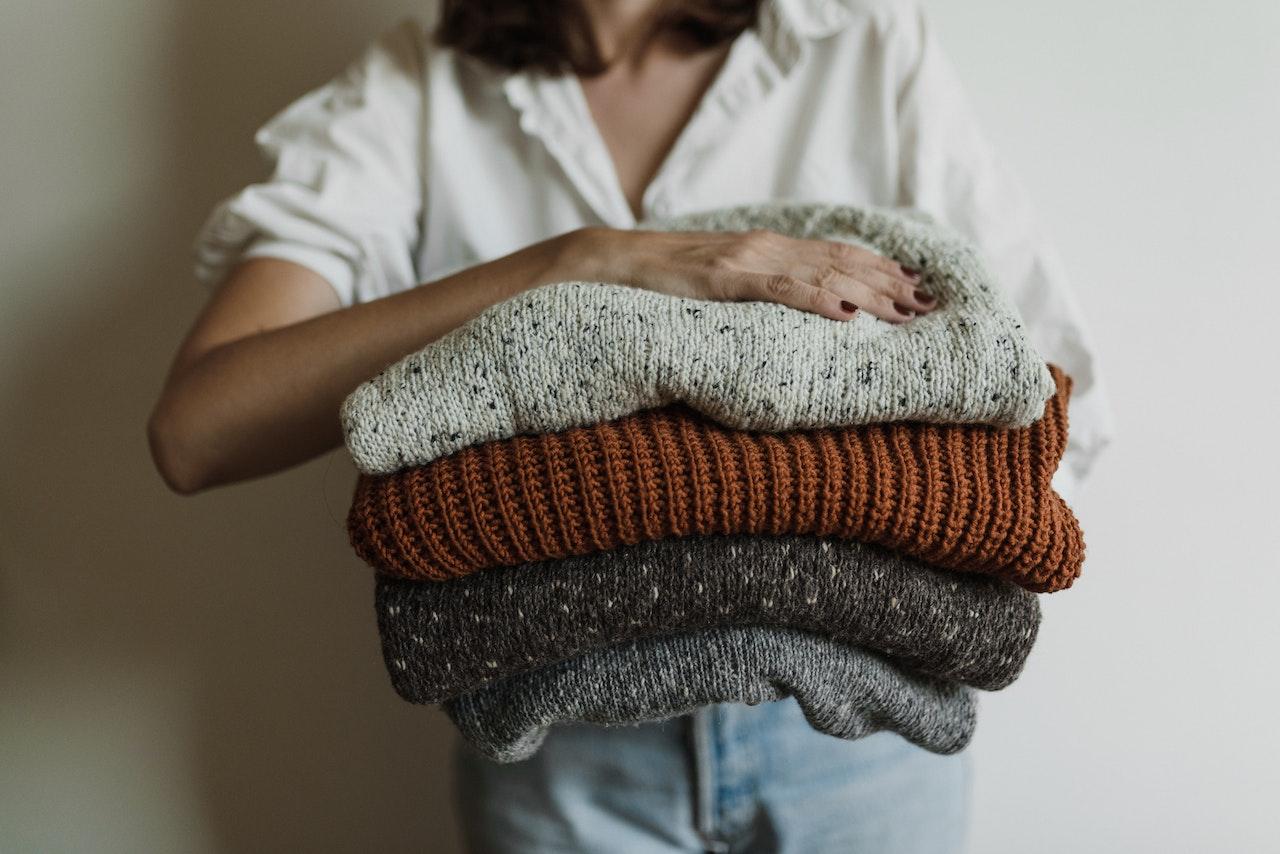6 Laundry Tips For This Year’s Spring Cleaning

With the season of spring approaching, what better time than to give your wardrobe a freshen up?
Well understanding and following the information on your clothing care labels is one of the easiest ways to ensure that you are looking after your items correctly and to keep them looking greater for longer.
New research by M&S has found that 68% of people are unsure what certain washing instructions on clothing care labels mean, and four-fifths of people do not always read the care labels on their clothing before washing.
As well as following the care instructions on your clothes, below a Product Technologist at M&S reveals their best advice when it comes to getting your laundry right every time.
1. Remove stains.

Starting off simple with an all-time obvious: remove the stains from your clothes before washing them. Though it may seem clear, not everyone thinks to do this before chucking a load in their washing machine and walking away.
“If you’ve got the odd faint, mud-stained t-shirt and don’t pretreat it, then it’s likely your garment should stay in good condition. But if you neglect deeper stains, such as blood, ink or food stains, your clothes are likely to be permanently soiled! If not pretreated, tough stains may not come clean from your clothes – so it’s important to assess what type of stain you have on your hands. Start by separating the stained clothes and soaking them thoroughly, before applying washing detergent directly on the stain. Soaking them in vinegar and warm water will help bring out the stains further.”
2. Separate your whites.
Ever ruined a crisp white shirt because you risked, or accidentally mixed in colored clothes into your white wash? You aren’t alone.
According to survey findings, two thirds of people (66%) do not always separate their whites before getting started on their washing, but why is it important?
“Everyone wants to get as much wear as possible out of their wardrobe – and that means keeping our white and our colored fabrics at the same level of brightness as when first bought! Though it may be less important to separate duller colored and well-worn clothes from your whites, I’d still suggest doing so as much as possible – particularly when it comes to new clothes. Bright clothes are likely to have excess dye in them that may bleed into your lovely white washing on the first few cycles. Also, if you plan on using bluing agents or bleach to keep your white clothes free from discoloration, it’s important to keep colors apart to avoid spotting or fade of color. If you do decide to take the risk, then I recommend using color catchers to avoid any cross over!”
3. Don’t disregard dry cleaning.
M&S endeavors to design clothing that is easily cared for, and for the select pieces that do need some additional care, M&S found that only 17% of people would take an item to the dry cleaners if the label instructed them to.
From delicate dresses to silky shirts, many of our most treasured outfits are considered “dry clean only.” So why is dry cleaning considered excessive?
“Dry cleaning is a subtle art that’s notoriously gentle on your clothing. It involves washing and pressing down clothes so that they keep their original shape and maintain longevity. Compare that process with a quick spin cycle, and you can understand why some fabrics need extra care! If you have an important dress or suit that you want to preserve, dry cleaning is a necessity – particularly when it comes to materials that can be damaged by excessive heat or too much water. It’s also worth noting that stains, such as grease and oil, only come out with great care, and don’t do well with the ‘wet’ cleaning process carried out by standard washing machines.”
4. Be sure of your settings.

Do you know your short cycles from your colored cotton settings? 73% of people admitted that they don’t change the program on their washing machine – but here is why it’s important…
“From choosing the right temperature to assessing the speed, knowing how the different settings on your washing machine work is really important, especially if you want your wardrobe to last as long as possible. Picking the right water temperature for each cycle will prevent your clothes from shrinking, stretching or fading. It really is as simple as following the care label instructions on your clothes! Be sure to sort your clothes before starting your wash, to ensure a decent lifespan on your load. Though it’s true that having hotter water does essentially mean cleaner clothes, it doesn’t mean you should dial up the heat for every wash. If you do, you’ll likely end up with clothes you can no longer wear due to shrinkage and misshaping!”
5. Make sure you are using the right products.
Whether you prefer powders, gel or pods, using the right products for your clothes is another way to keep your clothes in tip-top shape for longer. With so many options available, it’s important to know how each one works.
“Choosing a suitable detergent for your wash is one of the most important steps in keeping your clothes in good condition. Firstly, having too much detergent, in any form, can actually have a negative impact on your load of washing, as it can leave detergent residue – resulting in your favorite t-shirt becoming a scratchy, crunchy mess. If you usually opt for powder, you must remember that it may not dissolve fully during cooler cycles and that there’s a high chance you could over-do it on the dosage, as well as leave a sticky residue in the drawer. However, it is the best for hard water areas and tends to get grass stains out easily. On the other hand, liquid detergents are great for scent and pre-treating stains.”
6. Don’t overdo your tumble dryer.
When it comes to drying your clothes, 22% of those asked shared that they were unsure which items can go in the tumble dryer. If you ever feel unsure whether to use it, it’s always best to opt to air dry your clothes.
“A tumble dryer isn’t appropriate for every piece of clothing. Before shoving everything in the dryer, please take the time to go through your garments, check the labels and untangle each piece. From silk shirts to cotton t-shirts, if your clothes are made from natural or delicate materials then they shouldn’t be put in the dryer. Irreparable damage could mean that the clothes in question can’t be worn again! If you do have clothes that can be put in the tumble dryer, be doubly sure to vary the heat level.”
This article was written by Anabel Cooper and originally appeared onYour Coffee Break.





